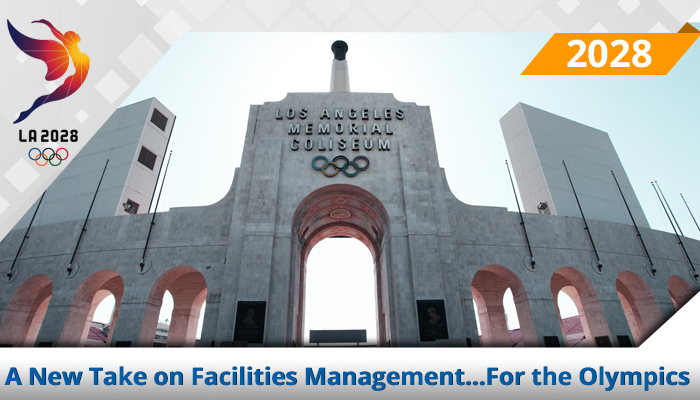The International Olympic Committee (IOC) recently announced that the city of Los Angeles has been chosen to host the Olympic Games in 2028, while Paris will host in 2024. In the announcement, the IOC Evaluation Commission released a glowing report praising L.A.’s and Paris’s bids for their emphasis on sustainability and fiscal restraint—an especially important feature given mounting criticism that the games place tremendous financial burden on host cities with questionable cultural and economic payoff. In fact, Paris and Los Angeles were the only competitors left after rival cities pulled their bids because of worries over cost.
So how does a city like L.A. – part of a metro area of more than 12 million people – exercise “fiscal restraint and sustainability” in such a massive undertaking? By bucking the trend of recent Olympics that saw cities build grand venues for events, only to have them end up unused (see Rio). In fact, both L.A. and Paris have 90% of the facilities they need to host already built, reducing costs to the cities.
L.A. plans to use only temporary facilities and venues that are already in place. Rather than constructing a costly new Olympic village, the city will house athletes in UCLA dormitories. More than 20 facilities either already exist, or are under construction for other purposes, giving the city a head start compared to Sochi and Rio, where some buildings were never quite finished. To give you a feel for how extensive this effort is, check out this interactive map: https://la.curbed.com/maps/olympics-map-los-angeles-2024-bid
While a reuse/re-purpose approach will dramatically reduce costs and waste in preparation for the Games – easing a burden that has seen previous host cities come close to financial ruin – it poses many other challenges. Putting on our Facilities Manager hat, we can only imagine the challenges that must be addressed. Imagine the daunting task of determining and managing how the buildings and athletic venues will be used, altered, and maintained throughout the preparation, hosting, and the restoration of the facilities back to their former purposes.
Where would you even start? Keeping our Facilities Manager hat on, just imagine the sheer overload of data that developers, designers, contractors and subs are likely to be dealing with. Consider how many hours (days?) of time will be lost going through rooms and boxes of paper documents. And, each location is different, with their own set of documents and filing systems (if any).
For example, the Riviera Country Club will be used as the Olympic Golf course. The venue has been around since the mid-1920’s. What do you think the paper trail is on TI’s, changes orders, and drawings for a multi-building facility of its age, size and stature?
Another example are the dorms at UCLA, where the athletes will be housed. The undergraduate community, “The Hill,” alone consists of 17 high-rise towers and five low-rise residential complexes, plus several buildings for dining halls, student services, etc. Imagine the paper trail where different “communities” on The Hill have undergone renovations at different times. Given the reputation of universities’ facilities management (mainly dependent on budget), speculation only leads us to assume that as-builts and other documents will necessitate some time requirement to find and validate the latest versions.
These two examples are only the tip of L.A.’s Olympic facilities documentation challenge; how to compile and understand documents from different eras and management systems, and convert them to usable, accessible documents for renovations.
If you answered technology, you are on the right track. By using a facilities document management platform, managers will be able to organize and access blueprints, warranties, emergency information in snap. Most importantly, to a massive project like the Olympics, these apps are mobile, and all that information is now at a facility manager’s fingertips. No searching dingy rooms for blueprints, warranties and other critical papers.
This mobility improves productivity, while the manager is out in the field at UCLA, she can markup and email documents to the rest of the team spread out across Southern California, getting work orders fixed and problems solved while on the go. And it increases efficiency by being able to track markups and work, the team becomes accountable in real time.
The ability to have immediate, searchable access to documents is also paramount to safety. In the event there is a disaster (earthquakes and fires go hand-in-hand with SoCal), or police activity, having the building information at hand and searchable is key to finding critical information such as shut-offs, evacuation routes, emergency exits, fire hydrants, contact information and even an emergency response plan.
While the 2024 Olympics may be the mother of all tenant improvement projects, there are tools designed to manage building documentation, even extensive projects like the Olympics. Getting as-builts and documents out of boxes and closets, organized and accessible is key to efficiently managing and tracking multiple buildings on multiple campuses.
Best of all, these apps are designed for managing your building or campus, and helping you improve productivity and safety.





